Planting distances. What distance to leave between the plants in the garden
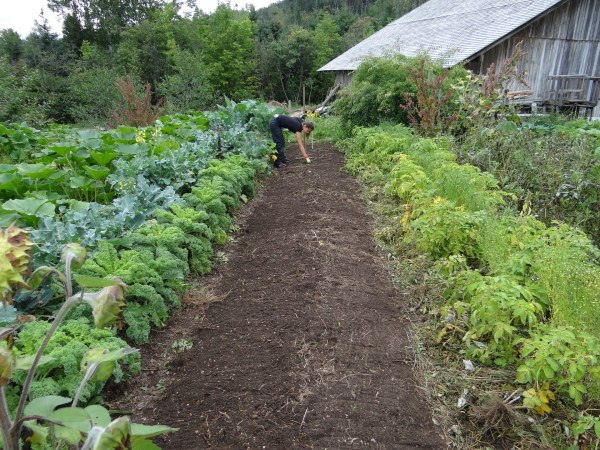
Today we are going to talk about one of the first aspects to take into account when planning the garden : the distance between plants . Whether you have a garden on cultivation tables or on terraces on the ground, knowing the sowing or planting distances of the different vegetables is very important. This will help us to know what the garden will occupy, where to place each crop and how many plants we can put in total.

To make a garden at home you have to start by planning the space. There are many types of culture containers for the urban garden or, if we set up the garden on raised terraces , different options for the placement of the plants, so it is very important to first know the planting distance of the plants that we have chosen to know where to put one and the other.
What distance to leave between the lettuces , how separated the garlic must be planted , or what is the sowing distance between tomato plants , are some of the questions that we will answer in today’s post.
☝ What does the sowing distance or separation between plants depend on?
The free space to be left between the plants in the garden depends on several factors.
In the first place, and of course, the size of the plants and how they develop (if they grow a lot laterally, if they occupy or «cover» the ground, like cucurbits, etc) influences .
The space between plants must be sufficient so that they do not remove the sun from each other and for adequate aeration (if it is not, the chances of garden fungi or pests that nest between the tangled leaves will appear).
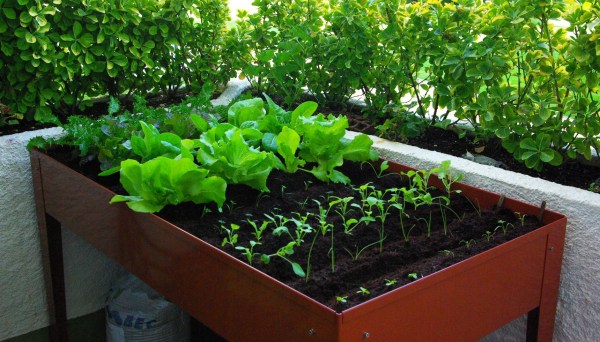
On the other hand, the size and development of the roots must be taken into account . An onion, a carrot or a radish, with a single root or not very deep main stem, is not the same as plants such as cabbage or tomato plants, with a much more widespread root system, with a multitude of lateral roots and more depth.
The planting distance or separation between plants in the garden should be sufficient so that their roots do not collide, become entangled or compete too much for water and nutrients.
✅ Planting distances for garden plants
Next we will see the sowing distances or separation that must be left between the horticultural plants .
Although these are not all garden crops, they are quite representative examples and with them we can get an idea of what the planting distances of other vegetables should be (in the last section, there is also a summary table with other crops).
Distance between tomato plants
Tomatoes have a short main root and a large «web» of secondary and adventitious roots, so each plant needs a large volume of soil for the roots to develop well.
The roots can extend 1 meter around the plant and deepen up to 30-50 cm (although most of the roots are distributed in the first 20 cm of soil), so if it is placed with other plants in association Crops should be chosen those with a very superficial root system, such as chard, lettuce or garlic.
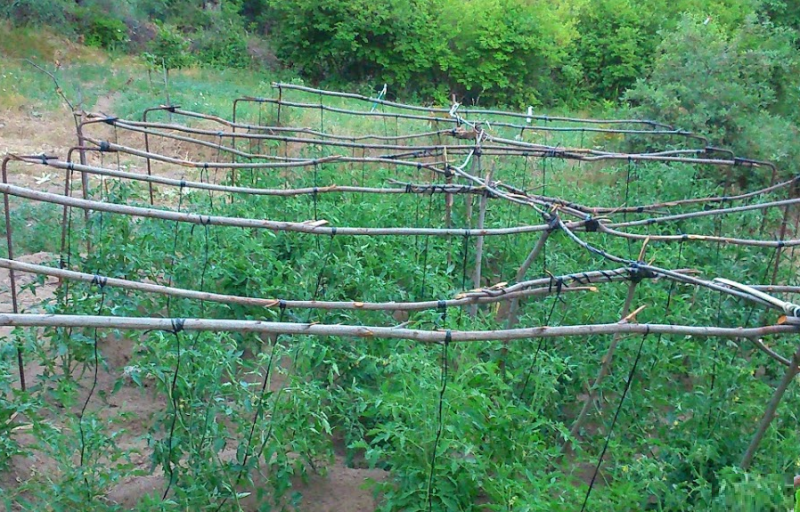
Roughly (since it depends on the size of the variety chosen) we could say that the distance to plant tomatoes is about 50 cm between plants . For large bushy varieties the distance between tomato plants will be greater, about 60-70 cm.
Between rows or rows of tomato, in any case, it will be necessary to leave at least 60-70 cm and it may be necessary to separate them up to 1 meter.
Tomato plants can develop (depending on the variety and the type of trellis we use) in a creeping, semi-erect or erect way. The type of development is something that we must also take into account because, in general, the distance between tomato plants should be greater in creeping varieties than in those that we keep vertical with tutors.
How far apart are garlic and onions planted
In the case of garlic and onion, the main root is the bulb itself (the onion or the head of garlic with all the teeth), so, as expected, the space between plants is not very large because the others « rootlets’ emerging from the bulb do not take up much space.
The sowing distance of garlic and onions is therefore quite easy to calculate if we know the size of the onions and garlic heads of the varieties that we are going to plant (there are larger types of onions and garlic and other smaller ones).
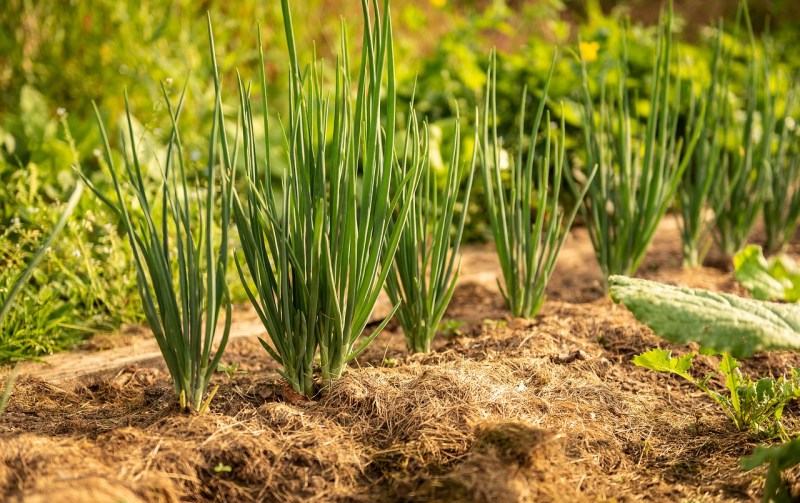
In general, for a medium size, the distance to which the garlic must be planted is about 10 cm .
In the case of onions, it is better to leave a little more space: a separation to plant onions of about 15 cm will be enough for them to grow properly.
Separation between lettuces
The sowing distance for lettuce, chard and other leafy vegetables is not very great since their root system extends very little.
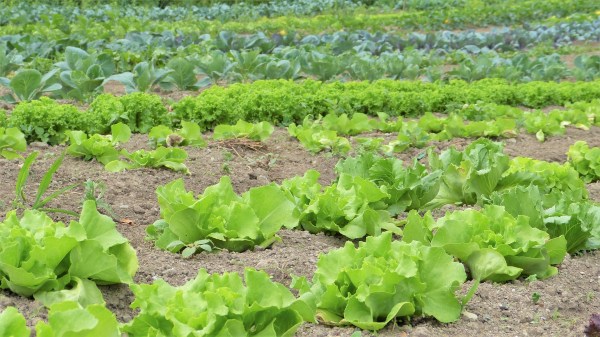
Starting from a distance between plants of about 15-20 cm , the separation between lettuces will depend, above all, on the variety. If we plant large lettuces, we will have to leave more space between them so that the leaves do not collide and fungi appear, while for dwarf varieties, 15 cm between them will suffice.
Carrot planting distance
In the case of carrots, the sowing distance is less than in other vegetables. The carrot itself is the root itself, so the space that each plant needs in the ground is that occupied by the same vegetable.
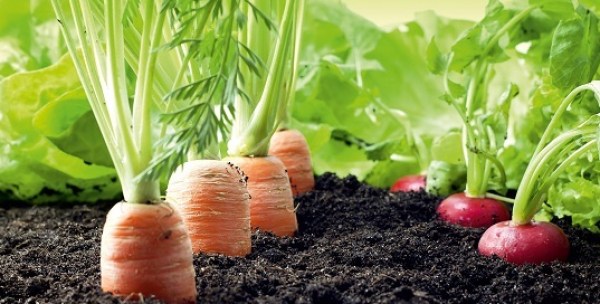
The separation between carrots is not very big, 15 cm between plants will suffice. The same happens with radishes and other root vegetables in which, in addition, the aerial part of the plant does not occupy too much.
Separation for planting pumpkins and zucchini
In this case the distance between floors is greater. Cucurbits (such as squash, zucchini or cucumbers), in addition to having a deep root system and a dense network of secondary roots that extend laterally, are creeping plants.
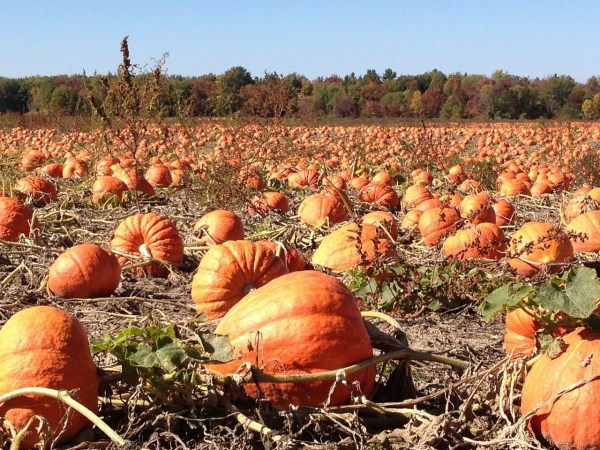
This implies that they are spreading and covering the ground with leaves and stems, so you have to leave enough space so that they do not become entangled with each other, they adequately receive the sun and water, and the fruits can grow with enough space.
In general, the planting distance for pumpkins is at least 1 meter (except for dwarf pumpkin varieties, which can be planted at a shorter distance).
✍ Vegetable planting framework
The planting frame is the minimum distance that must be left between plants so that the crops have enough space and can grow and develop correctly.
Although there are many types of planting frames – staggered, five of golds, royal frames … – or the plants can even be arranged in circles (as in spiral gardens ), the typical planting frame for vegetables is usually rectangular . That is, the garden plants are arranged at the vertices of a rectangle whose dimensions are:
(Distance between lines) x (Distance between floors).
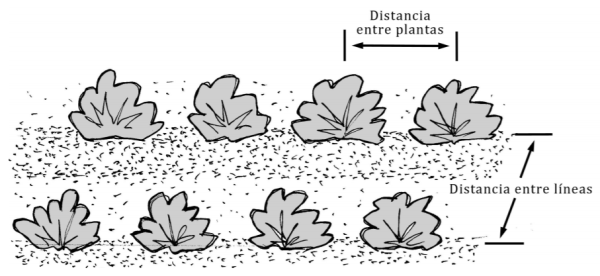
In the previous sections we saw the sowing distance or distance between plants of some of the most typical vegetables, but… what is the distance between crop lines? What is the vegetable planting framework?
We have prepared a table with the indicative planting frames for the different plants in the garden.
Keep in mind that this planting distances is not an exact science (there are varieties of the same species, for example, that differ greatly from each other in size), but approximately these are the main planting or planting distances of vegetables :
| Garden cultivation |
Row spacing (cm) |
Distance between plants (cm) |
|---|---|---|
| Chard | 40-50 | 30-40 |
| Garlic | fifteen | 10-15 |
| Celery | fifty | 20-30 |
| Eggplant | 80-100 | 50-60 |
| Broccoli | 60-70 | 60-70 |
| Zucchini | 100 | 50-70 |
| Pumpkin | 100 | 150-200 |
| Onion | 20-30 | 10-15 |
| Cabbage cabbage | 60 | 40-50 |
| Cauliflower | 70 | 70 |
| Endive | 30-40 | twenty |
| Endive | 30 | 30 |
| Strawberries | 40 | 30 |
| Broad beans | 30-40 | 30 |
| Green beans | 50-70 | 30-40 |
| Lettuce | 30-40 | 20-30 |
| Melon | 150 | 100 |
| Potatoes | fifty | 30-40 |
| Cucumber | 100 | 50-60 |
| Pepper | 70 | 40-50 |
| Leek | 30 | fifteen |
| Radish | fifteen | 10 |
| Watermelon | 150 | 100 |
| Tomato | 60-100 | fifty |
| Carrot | twenty | 15-20 |
I hope that today’s post has been useful to you and that, if you want, do not hesitate to make your contributions on the subject of planting distances or leave photos of orchards where you can see the planting frame. Greetings!

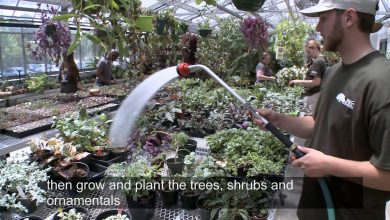
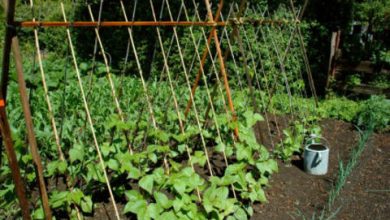
![Photo of Liquidambar Styraciflua: [Planting, Care, Irrigation, Substrate, Pests]](https://www.complete-gardening.com/wp-content/uploads/2022/08/liquidambar-styraciflua-planting-care-irrigation-substrate-pests-390x220.jpg)
![Photo of Pests and Diseases of Bananas: [Detection, Causes and Solutions]](https://www.complete-gardening.com/wp-content/uploads/2022/08/pests-and-diseases-of-bananas-detection-causes-and-solutions-340x220.jpg)